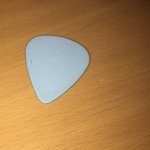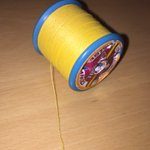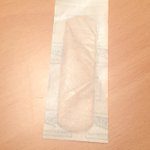
Photo taken from Google Images – www.ucl.ac.uk
A few weeks ago we had an input where we discussed comparative education. We mainly focused on the differences between Sweden and the UK and the different perspectives they had on learning in the early years.
The Swedish School system contrasts with the UK school system in so many ways. The first one being their school starting age. In Sweden, children do not start school until they are 7 years old, which is a whole 2-3 years after we do in the UK. When this was first mentioned I assumed that they would be so far behind in their learning compared to children in our country who start so much earlier. However, I was shocked to discover that this is not the case. According to The Guardian in 2010, Sweden has over taken the UK in reading and Maths! They also are not to far behind the Uk in the science rankings either. (Shepherd, 2014)
Sweedish Children attend Pre-school from the age of 6 where they place a strong emphasis on the importance of play. However, In most other countries play is looked at as more of a chance for children to relax and relieve stress. As in the Uk children are in school at this time trying to build on their reading, writing and numeracy. Sweden’s pre school prioritises play and social skills as well as sharing, being considerate and tolerant towards others. (Swedish Institute, 2014) These are qualities and values which I feel are extremely important to learn at this age. Tolerance for reasons which seem obvious to me, Children learning how to be tolerant of others makes them realise that people are different (whether by skin colour, disabilities or things as simple as the clothes they wear) and understand how to deal with those differences effectively so they will not be causing anyone to be left out because of this. Consideration is also important as it allows children to consider other peoples feelings and show a level of compassion and kindness for others and situations they may be in. In my opinion, so many more children (in our country, specifically) should be taught these important values and social skills before starting school as I am sure this would lower rates of bullying in and around schools, and even just to help ease everyday stress on the teachers in the teaching practice. Swedish pre-schooling is now viewed as the foundation stages of life long learning as it is well known for the high impact it has on the children’s dialogue, interaction and communication.
 Picture Taken from Google Images – globalpublicsquare.blogs.cnn.com
Picture Taken from Google Images – globalpublicsquare.blogs.cnn.com
Outdoor Education is another HUGE focus in Swedish schooling as children play outdoors any opportunity that they have. No matter what the weather may be. (Swedish Institute, 2014) In my opinion, this is what children should be doing at that age rather than being stuck in a classroom, children need to explore the environment and the weather first hand instead of being shown flashcards of rain and different types of weather… go out and feel it!
The homely environment in Swedish pre schools is something else which is to be desired in British schools. The staff are called by their first names instead of their last which makes everything more casual and gives the children a sense of security and comfortability. Just more of a friendly atmosphere I would say although it can be argued that first name terms does not show children how to be respectful. The room itself is also very homely. There is huge amounts of space for the children to play and a kitchen where they can snack in when they would like. They eat all meals and snacks around a table as if it was a sit down family dinner with pupils and staff. As well as this, children and staff members both remove shoes on entrance to the building as if it was their own homes. Comparing this to British schools, everything seems to happen at a certain time and things are a lot less relaxed. Children are allowed outside to play at 2 distinct times of the day and only weather permitting as they are made to stay inside if the weather is “too bad”. Now comparing the 2 school systems, it seems to me, that UK schools need to allow children a little more freedom in this regard.
Money is also an issue in the UK as childcare is becoming more and more expensive.Over the last Parliament the cost of a part-time nursery place for a child under two has increased by 32.8 per cent. A family paying for this type of care now spends £1,533 more this year than they did in 2010, while wages have remained largely static. (Rutter, 2015)
This quote from the Family and Care Trust article shows us just how expensive child care in the UK is and how much a family would have to pay to have their child to be in a nursery so they can go work to make money to provide for their family. When in actual fact the money they make from work will most likely be spent on the actual child care facilities. In Sweden there is a maximum fee policy which makes childcare affordable for everyone. The price is capped for the highest amount families can pay for childcare SEK 1260 per month (which works as just about £100 per month) where as low income families will pay nothing. (Swedish Institute, 2014)
From my research on the subject, I feel that Swedish children have more opportunity to learn first hand and in a more enjoyable way. Even starting school a few years later than what we are used has shown not to make a huge impact on the learning of the child. Maybe the UK should begin to follow in the footsteps of the Swedish Schooling System?
References
Rutter, J. (2015) Family and Child Care Trust. Available at: http://www.familyandchildcaretrust.org/sites/default/files/files/Childcare%20cost%20survey%202015%20Final.pdf (Accessed: 23 October 2015).
Shepherd, J. (2014) World education rankings: which country does best at reading, maths and science?. Available at: http://www.theguardian.com/news/datablog/2010/dec/07/world-education-rankings-maths-science-reading (Accessed: 22 October 2015).
Swedish Institute (2014) Play is key in preschool. Available at: https://sweden.se/society/play-is-key-in-preschool/ (Accessed: 22 October 2015).


















 Picture Taken from Google Images –
Picture Taken from Google Images – 